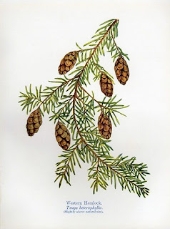I like them in my acid-loving hugelmounds (we only have alders, cedars, and hemlocks on our property). They do like to fall down in the wind, though, at least at our place, so we try to keep them from around our house. They burn decently in our woodstove... at least compared to our other options, lol! They also make okay Christmas trees, if pruned for a few years in advance--just don't prune them too much after you cut them down, or it will lose all its needles by Christmas (found that out the fun way last year).
I believe the needles are a good source of vitamin C, and the young shoots are edible
http://www.natureskills.com/wild-plants/types-of-evergreen-trees/
Thinking of other permaculture uses, I wonder if they are good for growing mushrooms (I've never tried any mushroom cultivation)










